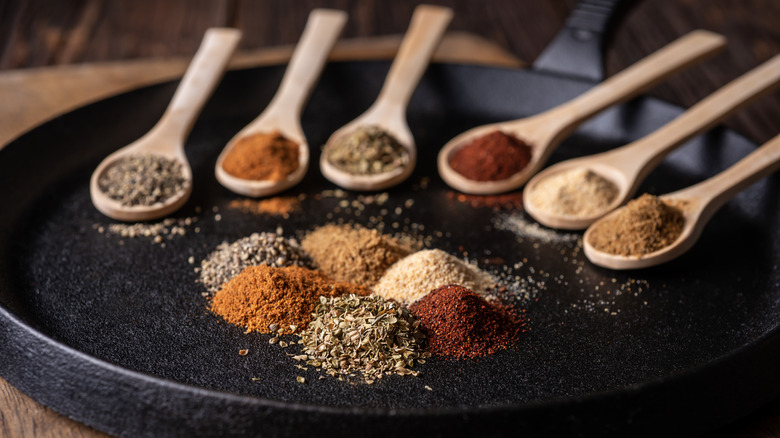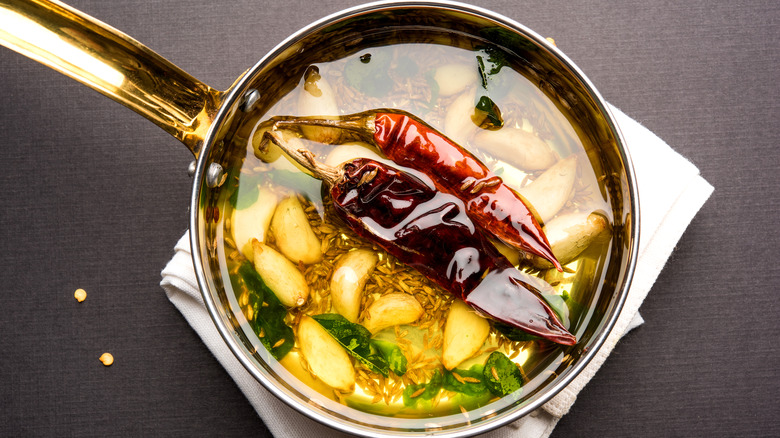The Simple Step To Get More Flavor From Your Spices
Dry spices are fine, toasted spices are better, and spices that have been bloomed are amazing. Blooming your spices, also referred to as tempering, is the simple step of cooking spices in oil to bring out maximum flavor and aroma. The reason this trick is so effective is because spices contain fat-soluble flavor compounds. Heat on its own does help pull flavor out, so toasting spices before cooking with them can result in a more flavorful dish. However, combining heat and oil further draws out the compounds that can only be released with exposure to fat.
This technique originates from South Asia, and is utilized heavily in Indian cuisine. In India, this method is called by many different names depending on the region, including vaghar, tadka, choonk, or baghaar. The spice mixture used changes by region, and even by household. For example, in the southern state of Kerala a blend of clove, star anise, cinnamon, and coconut is popular, while in the northwestern Punjabi state, cardamom, cinnamon, clove, ginger, garlic, and onion are used.
This technique is not limited to Indian or South Asian cooking; try blooming herbs de Provence for French dishes, or Middle Eastern spices for blending into hummus. Thyme is key in Italian dishes like soups and homemade pasta sauces, and when thyme is tempered, it can taste 10 times more pungent! Any rice, bean, soup, or stew recipe is a great candidate for enhancing flavor through spice blooming.
How to bloom spices
Ground spices or whole seeds and pods can be used for blooming; it depends on your preferences and the recipe. Dishes like curry and dhal typically keep the cumin, fenugreek, and fennel seeds in whole form. Chilis can be upgraded by blooming ground chili, but you could also try whole dried chilis or a combination of the two. Something like a whole cinnamon stick or dried chili should be removed before the dish is served.
For blooming, it's important to use an oil with a high heat point, like avocado oil, coconut, oil, butter, or ghee, which is commonly used in Indian cooking. Spices can be bloomed in the same pot that will be used for cooking the dish; pots and pans with higher walls are safer to use to ensure hot oil is not splashing out. This amount of oil is normally eye-balled, but a good rule of thumb is to use about 2 tablespoons of oil or fat over a medium heat.
Fresh components, like garlic, ginger, and onion, go in first. Next comes anything in whole seed or pod form, followed last by ground spices. The quickest to burn are the ground spices, so just a few seconds are sufficient for these. The spice blooming is complete when you smell a fragrant aroma, or seeds are beginning to crackle. Now, you can continue to cook the dish in the same pot. A dish can also be finished with bloomed spices as a creative, flavorful garnish.

